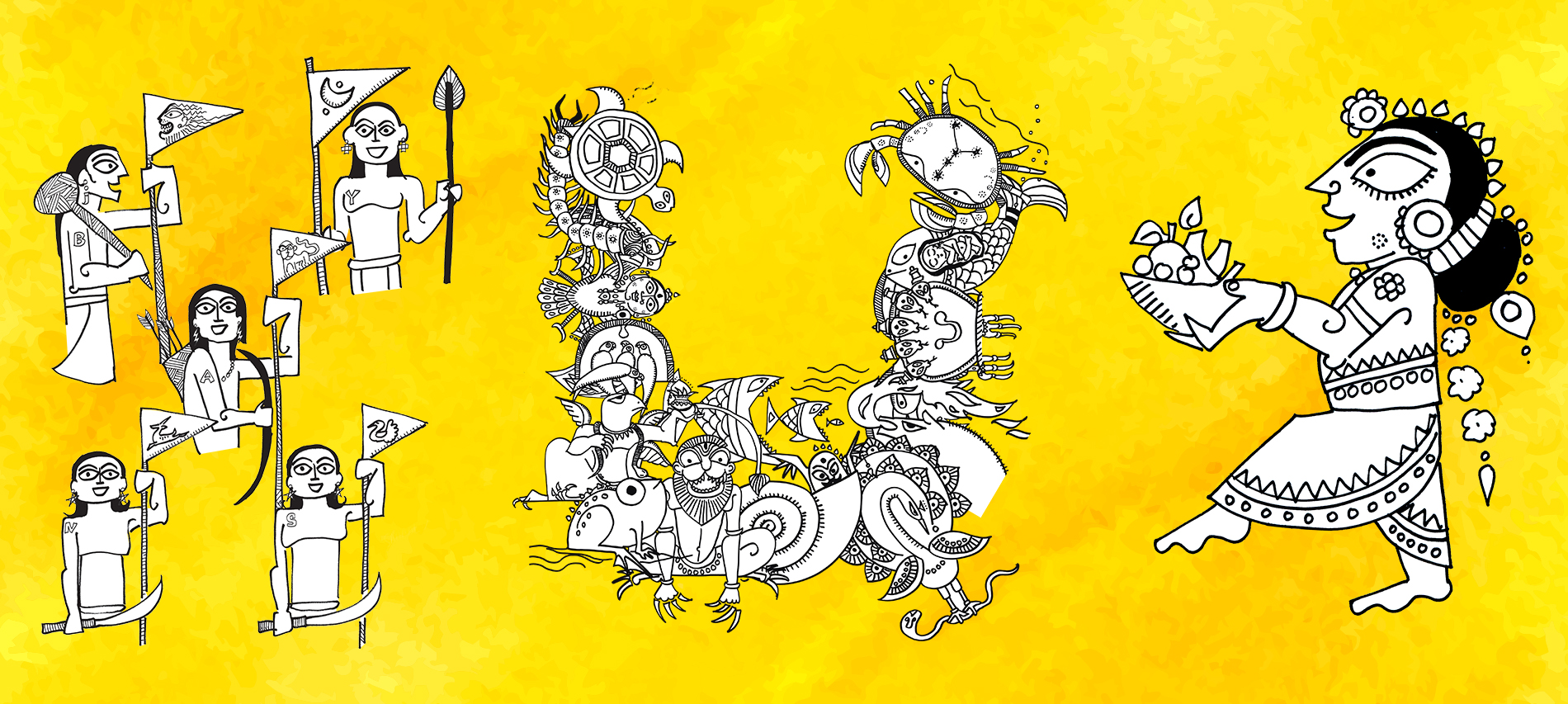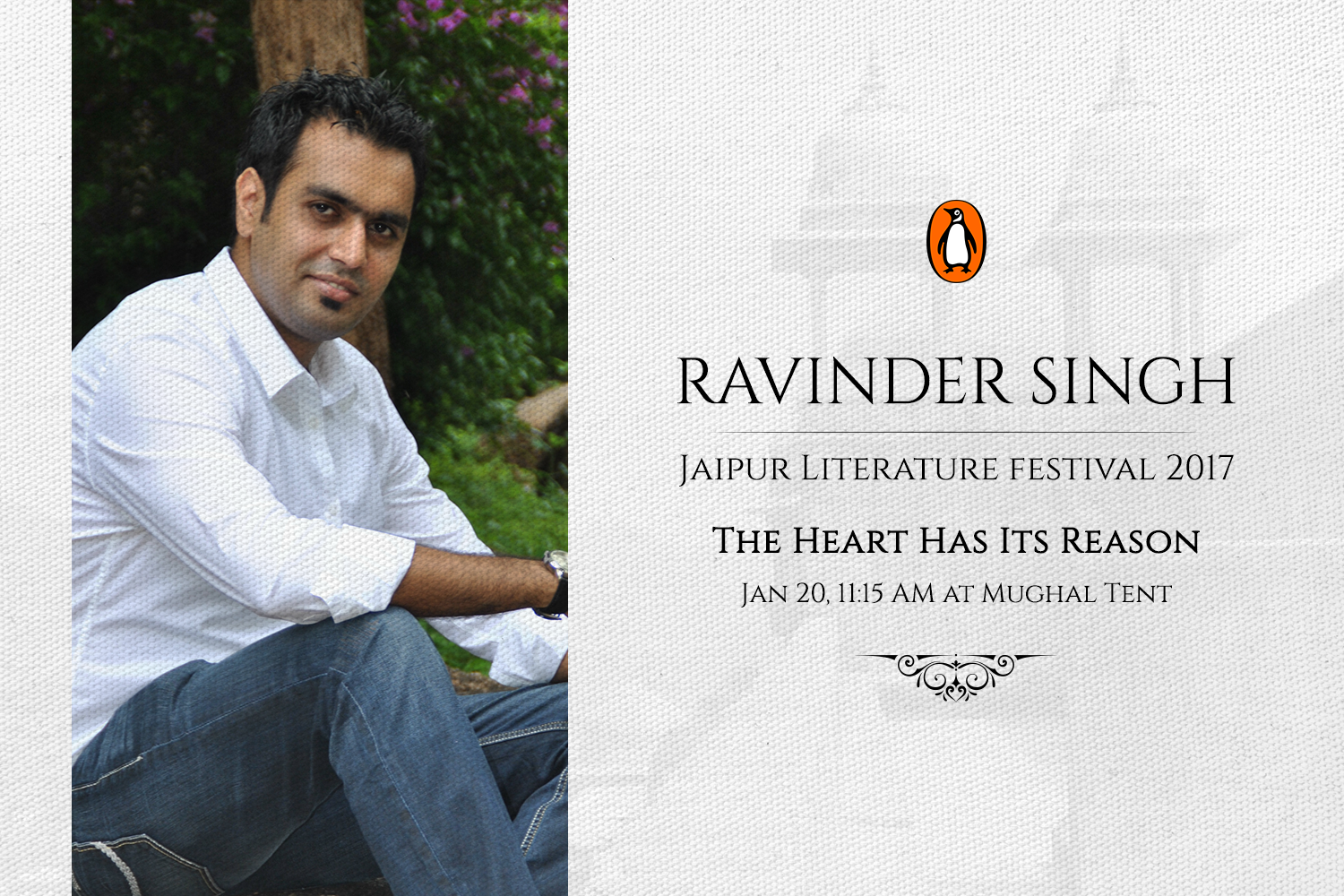Mothers have been an important mainstay in epics, folk tales and mythologies for generations. Today, as we celebrate Mother’s Day, here is an exclusive excerpt on mothers from Devdutt’s Devlok 2.
A mother gives birth to a child. But did god give birth to the mother or did a mother give birth to god?
As interesting as the question is, the answer too is not simple. In a temple, the space where a god’s image is kept is known as garbha griha; that is, god is residing inside the garbha. Garbha means womb. Whose womb is this? A temple itself has been seen as a woman, a mother. Spiritually, Prakriti is everyone’s mother. Prakriti has given birth to sanskriti (culture). God’s mother is also Prakriti.
The Rigveda has this interesting sentence that Daksha gave birth to Aditi and Aditi gave birth to Daksha; that is, the father created the mother and the mother created the father. When you go way back in the past, the division between father and mother collapses. With god, this concept does not hold because god is swayambhu—he has given birth to himself; he is his own mother. Two words are used often in the Puranas – Yonija (born of the womb) and Swayambhu (who gives birth to self). God is always swayambhu, but his avatars are yonija; they experience birth and death. For instance, Ram is an avatar, so he is born and dies. He has a mother, Kaushalya. Krishna, likewise, has a mother, Devaki. Shiva is swayambhu.
In Tantra parampara, where goddesses are given a lot of importance, the stories and folk tales speak of how in the beginning of the world there was only a devi/Prakriti called Adi Maya Shakti. She gave birth to three eggs from which were born Brahma, Vishnu and Shiva. She is therefore called Triamba (one who gave birth to three children). This does not happen in puranic stories. In Shakt parampara, god does have a mother. In Vaishnav parampara, god gives birth to himself; and he creates the world and its creatures from himself. In Shaiva parampara, Shiva gives birth to himself; he is swayambhu, doesn’t have a mother, but gives birth to all mothers.
Devi is sometimes called a kumari (virgin) and sometimes mata (mother). How is that?
Christianity has a concept of the virgin mother who is Jesus’s mother. The word kumari, in India and in the world, does no necessarily mean virgin. It means a woman who is independent, who has no husband, and no man has a right over her. She has no ties and is completely liberated. So she is both mata and kumari, that is, an independent mother. Her hair is always depicted untied, to symbolize her freedom. No one can have dominance over Prakriti.
In Vaishnodevi or Kal Bhairav temples, the story is that of Bhairav wanting to have a relationship with the goddess; the goddess refused and cut off his head. ‘You cannot control me.’ Kal Bhairav then becomes her guard. In another story, when Brahma’s fifth head wanted a right over her, Bhairav cut off his head. Such are the violent stories associated with kumari.
The symbolic meaning could be that man’s ego prevents a devi from becoming a kumari, which is why he gets cursed or gets his head cut off. These are spiritual, metaphysical topics.
Shiva was swayambhu, but who was his son Karitkeya’s mother—Parvati or Ganga?
In Shiv Puran, the story is that after their marriage, Shiva says he has no need for a child. He says, ‘I am swayambhu, anadi, anant, without beginning or end; I will never die. So why do I need children?’ Devi says, ‘But I want children; I want to be a mother.’ An interesting conflict arises here. When Shiva is about to offer his seed, all gods and goddesses say that Shiva’s seed cannot be accommodated in just one womb; it should be placed in many wombs. The story goes that his seed is so hot that no one can touch it. First is is given to Vayu, wind, in the beliefe that he’ll be able to cool it down, but he fails. Vayu gives the seed to Agni, fire, who too cannot hold it. He passes it on to Ganga and her waters starts boiling. The reed forests (Sara-vana) near the river start burning. From the ash of those reeds, a child emerges. In some stories, it is six children who emerge. As the infants start crying, Krittika nakshatra, constellation of six stars, descend from the sky as the childrens’ mothers and feed them milk. Finally, Gauri, Shiva’s wife, joins the six children together. That child is Kartikeya, also called Shanmukha, or one with six heads.
The question arises, the father of the child is Shiva, but who is the mother? Vayu, Agni, Ganga, Sharavan, Krittika, Parvati all stake a claim. So, he has many mothers. Shiva’s seed has thus gone to many yonis; it shows that the child is so powerful, he cannot be born of just one womb. Kartik means son of Krittika. In the south, he is called Sharavanan, son of Sharavan. In images, he is sometimes shown along with six or seven matrika, mothers.
What is Ganesh’s story? Who is his mother?
In stories, although Shakti wants to become a mother, the gods don’t want her to give birth in the normal way. If the child is born from her yoni, it’ll be so powerful that it will defeat Indra, the king of the gods. So, Shiv-Shakti’s children are not born from Parvati’s yoni. Kartikeya is born of Shiva’s seed, from many yonis. Ganesh is born from the scrapings of Parvati’s body. Again, he is ayonija.
The story is that Parvati goes to Shiva, asking him to give her a child. He says he is not interested as he’s immortal. She tells him she’ll make it herself; she’s the goddess, after all. She first collects the scrapings (mull) of her skin, mixed with the applied chandan and haldi. Then she makes a doll of it and gives it life. In Vamana Purana, it is said the child’s name ‘Vinayak’ comes from ‘bina nayak’ (without a man); there are other stories about the word’s origin too. Shiva does not like the way Parvati has birthed her child, as he cannot recognize her image in it, so he cuts off its head. Parvati starts weeping, and insists he bring back the child to life. So Shiva gives him an elephant head and that’s how Ganesh is born. Again, it is ayonija.
In the Mahabharat, we see many ambitious mothers who want their sons to be king.
In the Puranas, the stories have more of a spiritual, intellectual concern, while in the Ramyan and Mahabharat, the focus is on wealth and property. For this reason, the men go to war, and the women want their sons to grow up and be victorious. This is presented in a fascinating way in the Mahabharata. When Shantanu wants to marry Satyavati, she first attaches a condition that her son inherit Shantanu’s kingdom. She claims she is securing her child’s future. Is that the real reason or does she want the high position of a rajmata (queen mother)?
There is also a competition between Gandhari, Kunti and Madri. When Gandhari is pregnant, she hears that Kunti has given birth to a son. Although Gandhari was pregnant from before, Kunti used her mantra to have Yudhisthir without the nine-month period. Gandhari gets so upset, she beats her belly with a stick. The mass that emerges from her belly is cold as iron. When Vyas creates 100 children from this mass, Gandhari is happy, because now she has more children than Kunti. Kunti begets two more children and uses up the power of her mantra. She gives the mantra to Madri who uses it once and calls Ashvin Kumar and gets the twins, Nakul and Sahdev. Pandu asks Kunti to let Madri use the mantra once more as she herself had used it thrice, but Kunti refuses. She fears that if Madri were to produce twins again, she’d have more children, and therefore more importance, than her. In the Mahabharat, this rivalry has been subtly depicted.
What about the mothers in the Ramayana?
Kaikeyi’s story is the most well known. When she had saved Dashrath’s life during a dev-asura battle, he had promised her two boons. The day before his eldest son, Ram’s, coronation, she throws a tantrum and demands her boons. She asks that Bharat be made king instead of his first-born Ram, and that he send Ram into vanvas (life in the forest) for 14 years. Ram’s mother, Kaushalya, is pained and asks Kaikeyi why she had to be so cruel to a son who’d treated her like his own mother.
An interesting aspect of this story is that when Dashrath marries Kaikeyi, he does not have any children. The astrologer says that Kaikeyi will definitely have a son. At that time, Dashrath promises her that her son would become king. So, in a way, Kaikeyi is only asking for what is rightfully her due. It’s like a court case, a settling of an agreement, where the lines are not clear. Whether Kaikeyi is ambitious or merely asking for her right is hard to say.
Krishna is called Devakinandan and Yashodanandan. Who was his mother?
There are some who believe that Krishna is not an avatar (of Vishnu’s) but himself an avatari—from whom avatars emerge. Others see him as an avatar. But he is born from Devaki’s womb, so he is yonija and experiences death. Mausala Parva in Mahabharat describes Krishna’s death. He is born from Devaki’s womb in Mathura, but is raised by Yashoda in Gokul. So he has two mothers – birth/blood mother and milk mother.
In folk songs, Krishna is asked who his real mother is—Devaki who has birthed him or Yashoda who has raised him? Krishna replies, do you think my heart is so small that it cannot contain more than one mother? I can handle both. But the question is who has the maternal right over him? Who is to answer that—it’s a complex world. The story suggests that relationships are not built by blood alone. Another aspect is that Devaki is a princess, while Yashoda is a milkmaid. So Krishna’s claim that both are his mothers shows that he has a relationship with the palace dwellers as well as cowherds, with the city as well as the village. He is large-hearted and this is why Krishna is associated with love.
In Puranas, is there a story of single mothers?
Bhagwat Puran has a story of Devahuti whose husband is Kardam rishi who says he doesn’t really want to have children, but has been told by his ancestors that he won’t achieve moksha (liberation from life and death) until he has children. But he doesn’t want any part in raising that child. Devahuti agrees to raise the child alone, and the child grows up to be Kapil muni who develops the Sankhya philosophy. It is also well known that Sita raises Luv and Kush on her own. Shakuntala too raises her son Bharat by herself in the forest, without the support of her husband.
Is there a story in our Puranas where a father plays the role of a mother?
When apsaras have children, they abandon them. Shakuntala’s mother Menaka had abandoned her in the jungle, and Shakuntala was raised by Kanva rishi who is like a single father. When Sita goes back to her mother, and disappears inside earth, she leaves her children behind with Ram who becomes a single father.
This is an excerpt from Devdutt Patnaik’s Devlok 2.














































